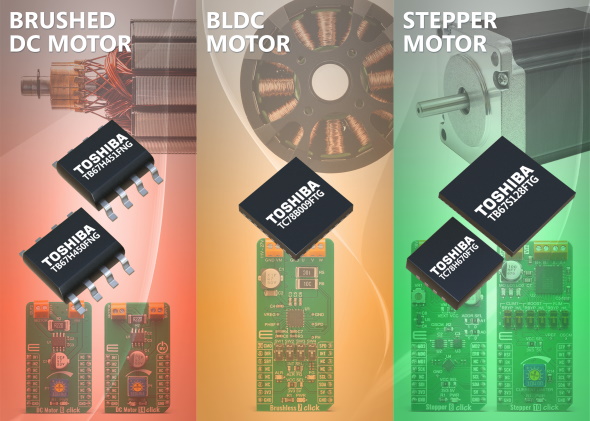Toshiba motor drivers on Click boards for prototyping
-
Hits: 5337

A selection of Toshiba’s motor drivers are to be available ‘Click’ format PCBs after the company tied up with MikroElektronika – yet another sign of how important maker formats have become in professional prototyping, it Raspberry Pi and Arduino are insufficient proof.
The plug-and-play style boards support Mikroe’s standard mikroBUS interface.
“Mikroe support this range of development boards with software examples which help designers to simplify the integration of the boards when developing prototype systems and undertaking hardware evaluation,” according to Toshiba.
Amongst the new boards there are two for brushed dc motors, one for brushless dc (BLDC) motors and two for stepper motors.
DC Motor 6 Click is for brushed motors and is based in the TB67H451FNG
DC Motor 14 Click is for brushed motors and based on the TB67H450FNG
These include H-bridges and PWM chopper drive and work with motors across 4.5 to 44V and up to 3A (6.2A peak). Four modes are available: forward, reverse, short brake and stop. Spending far too much time data sheet reading, it is hard to find much difference between the TB67H450FNG and 451. Looks like the 450 latches off after an over-current, while the 451 auto-re-starts. Both auto-start after thermal shut-down. Electronics Weekly has asked Toshiba what other differences there are – watch this space – or tell me below if you know.
Brushless 7 Click is for BLDCs and is based on the TC78B009FTG
It operates without Hall sensors and integrates a closed-loop speed controller that can “set rotational speed regardless of any dynamic supply voltage or load fluctuations”, said Toshiba. User-defined speed profiles can be stored in its non-volatile memory, eliminating the need for an external controller.
Stepper 10 Click is for stepper motors and is based on the TB67S128FTG
